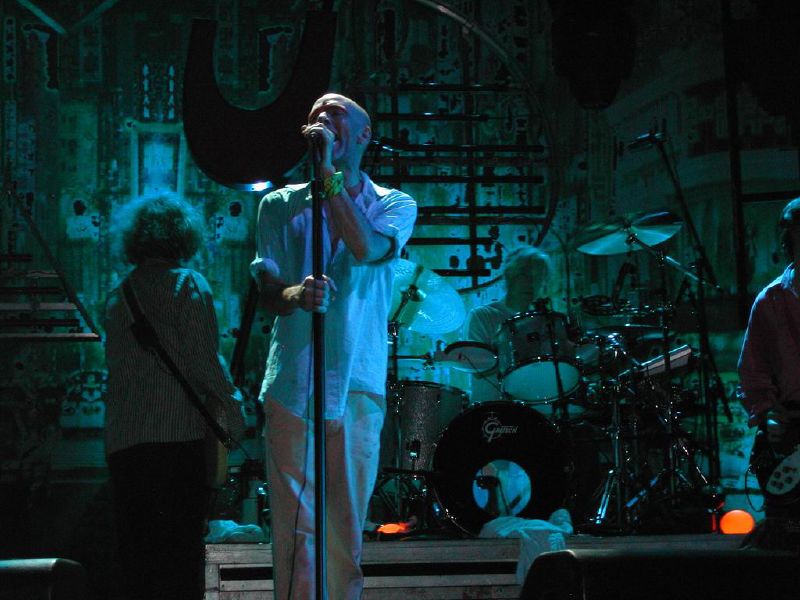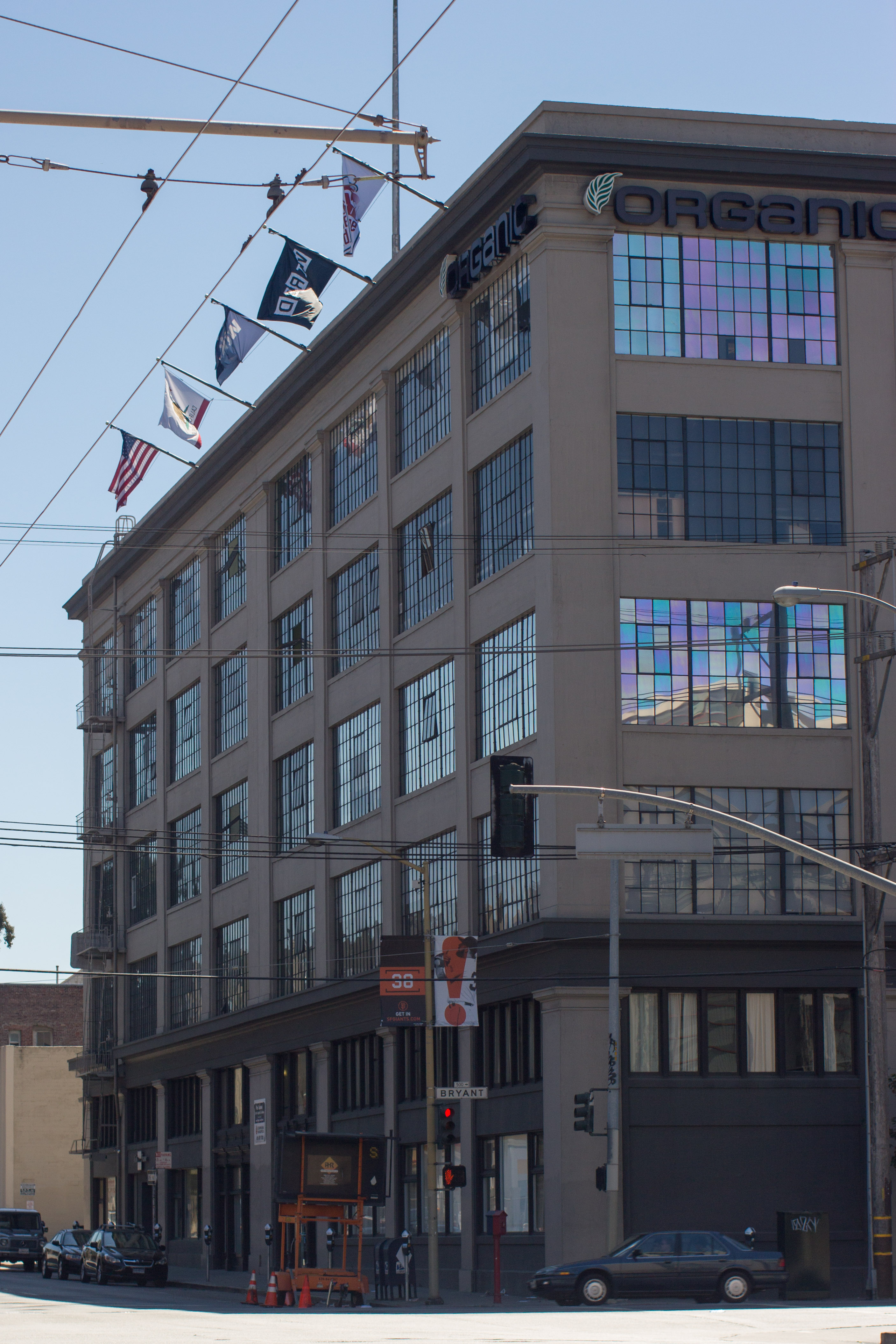|
Lighthouse (EP)
''Lighthouse'' () is the second extended play (EP) by Japanese musician Gen Hoshino. It contains six songs that Hoshino wrote for the talk show of the same name, hosted by Hoshino and comedian Masayasu Wakabayashi. The EP was released on September 8, 2023, by Speedstar Records and Netflix Music, exclusively for streaming platforms. Hoshino offered to write a song for each episode of the talk show, as he found this concept interesting and believed it hadn't been done before. On the EP, Hoshino employed a production manner he compared to "messing around". This, along with the songs' usage as ending themes in a talk show, prompted him to take use of styles and techniques he feared he couldn't on other works. The alternative EP features varied genre throughout its track listing, including rock, hip hop, and acoustic. It was written, composed, and self-produced by Hoshino, and includes features from talk show co-host Wakabayashi and American instrumentalists Louis Cole and Sam ... [...More Info...] [...Related Items...] OR: [Wikipedia] [Google] [Baidu] |
Gen Hoshino
is a Japanese singer-songwriter, musician, actor, and writer. Career Music Since 2000, Hoshino has led the instrumental band Sakerock, where he plays marimba and guitar. They released over ten albums before disbanding in 2015. As a solo artist, he debuted with his first album '' Baka no Uta'' on June 23, 2010. His first physical single, "Kudaranai no Naka ni" was released on March 2, 2011 and peaked at number 17 on the Oricon Singles Chart. The subsequent singles – "Film", "Yume no Soto e", "Shiranai" (2012), and "Gag" (2013) – all charted in the top 10. His second album, ''Episode'', released on September 28, 2011, peaked at number five. His third album, ''Stranger'', released on May 1, 2013, peaked at number two on the Oricon Albums Chart and was certified gold by the Recording Industry Association of Japan. Since 2011, he's been co-hosting a Ustream program called together with Ichirō Yamaguchi of Sakanaction. In 2014 the program officially changed its name to ''Yoru no ... [...More Info...] [...Related Items...] OR: [Wikipedia] [Google] [Baidu] |
Oricon Combined Albums Chart
, established in 1999, is the holding company at the head of a Japanese corporate group that supplies statistics and information on music and the music industry in Japan and Western music. It started as, which was founded by Sōkō Koike in November 1967 and became known for its music charts. Oricon Inc. was originally set up as a subsidiary of Original Confidence and took over the latter's Oricon record charts in April 2002. The charts are compiled from data drawn from some 39,700 retail outlets (as of April 2011) and provide sales rankings of music CDs, DVDs, electronic games, and other entertainment products based on weekly tabulations. Results are announced every Tuesday and published in ''Oricon Style'' by subsidiary Oricon Entertainment Inc. The group also lists panel survey-based popularity ratings for television commercials on its official website. Oricon started publishing Combined Chart, which includes CD sales, digital sales, and streaming together, on December 1 ... [...More Info...] [...Related Items...] OR: [Wikipedia] [Google] [Baidu] |
Pop Virus
''Pop Virus'' is the fifth studio album by Gen Hoshino, released in 2018. The first track of the album, also named "Pop Virus", is playable in the 2019 video game ''Death Stranding ''Death Stranding'' is a 2019 action game developed by Kojima Productions and published by Sony Interactive Entertainment for the PlayStation 4. It is the first game from director Hideo Kojima and Kojima Productions after their split from Kona ...''. Track listing Charts Weekly charts Year-end charts Accolades References {{Authority control Gen Hoshino albums 2018 albums ... [...More Info...] [...Related Items...] OR: [Wikipedia] [Google] [Baidu] |
All Night Nippon
is a Japanese radio program broadcast by Nippon Broadcasting System and other radio stations from 1–5 am (JST). It preempts broadcasts from TBS Radio's programming heard on stations under both JRN and NRN (TBC Radio, CBC Radio, etc.). DJs The day of the week below are for the evening preceding in Japan, i.e. day in UTC. * Mondays – Thursdays, 13:00 UTC – 15:00 UTC with "All Night Nippon Music 10 (オールナイトニッポンMUSIC10)" (aired on 11 radio stations in Japan) ** Mondays: Ryoko Moriyama ** Tuesdays: Anju Suzuki ** Wednesdays: Yuko Natori (first and third Wednesday), Chisato Moritaka (second Wednesday), Kaori Kishitani (fourth Wednesday) ** Thursdays: Marina Watanabe * Mondays – Saturdays, 16:00 UTC – 18:00 UTC with "All Night Nippon (オールナイトニッポン)" (aired on 36 radio stations in Japan) ** Mondays: Creepy Nuts ** Tuesdays: Gen Hoshino ** Wednesdays: Nogizaka46 ** Thursdays: Ninety-nine ** Fridays: Shimofuri Myojo ** ... [...More Info...] [...Related Items...] OR: [Wikipedia] [Google] [Baidu] |
Rockin'On Japan
''Rockin'On Japan'', often stylized in all caps, is a monthly magazine that covers the Japanese music scene and various cultural events in Japan, such as art venues and culinary expos. History The magazine was founded in 1972, and focused on providing news that was thoroughly sourced and fact-checked, while also providing content without censorship and on original news stories. This requirement involved only conducting one on one interviews without doing generalized press interviews and announcements. The magazine later, in 1986, split into versions that served Japan domestically, re-titled to ''Rockin'On Japan'', and that covered international music content, titled ''Rockin'On''. The current owner of the magazine is Yoichi Shibuya, who oversaw the expansions of the magazine and the creation of official music festivals sponsored by the magazine itself. Festivals and production The main festival created by the magazine is named ''Rock in Japan Festival'' and sets itself apart by ... [...More Info...] [...Related Items...] OR: [Wikipedia] [Google] [Baidu] |
Blue-eyed Soul
Blue-eyed soul (also called white soul) is rhythm and blues (R&B) and soul music performed by white artists. The term was coined in the mid-1960s, to describe white artists whose sound was similar to that of the predominantly-black Motown and Stax record labels. Though many R&B radio stations in the United States in that period would only play music by black musicians, some began to play music by white acts considered to have "soul feeling"; their music was then described as "blue-eyed soul." 1960s Georgie Woods, a Philadelphia radio DJ, is thought to have coined the term "blue-eyed soul" in 1964, initially to describe The Righteous Brothers, then white artists in general who received airplay on rhythm and blues radio stations. The Righteous Brothers in turn named their 1964 LP ''Some Blue-Eyed Soul''. According to Bill Medley of the Righteous Brothers, R&B radio stations who played their songs were surprised to find them to be white when they turned up for interviews, and one DJ ... [...More Info...] [...Related Items...] OR: [Wikipedia] [Google] [Baidu] |
Alternative Pop
Alternative rock, or alt-rock, is a category of rock music that emerged from the independent music underground of the 1970s and became widely popular in the 1990s. "Alternative" refers to the genre's distinction from mainstream or commercial rock or pop music. The term's original meaning was broader, referring to musicians influenced by the musical style or independent, DIY ethos of late-1970s punk rock.di Perna, Alan. "Brave Noise—The History of Alternative Rock Guitar". ''Guitar World''. December 1995. Traditionally, alternative rock varied in terms of its sound, social context, and regional roots. Throughout the 1980s, magazines and zines, college radio airplay, and word of mouth had increased the prominence and highlighted the diversity of alternative rock's distinct styles (and music scenes), such as noise pop, indie rock, grunge, and shoegaze. In September 1988, ''Billboard'' introduced "alternative" into their charting system to reflect the rise of the format across ... [...More Info...] [...Related Items...] OR: [Wikipedia] [Google] [Baidu] |
Yūki Himura
is a Japanese comedian, actor and voice actor. He performs ''tsukkomi'' (basically he did not decided if either he perform ''boke'' or ''tsukkomi'', but can also perform ''boke'') in the comedy duo Bananaman. His partner is Osamu Shitara. Himura married Aika Kanda, a Television announcer in April, 2018. Himura grew up in Sagamihara, Kanagawa Prefecture. He is represented with Horipro Com. Himura has a very recognisable bowl cut hairstyle and is left-handed. Filmography ''To see his appearances as part of Bananaman, see Bananaman (comedy duo) is a Japanese ''owarai'' comedy duo consisting of Osamu Shitara and Yūki Himura. Career Shitara and Himura formed as a comedy unit in 1993 and debuted on stage in 1994. Himura had broken up with his previous partner and Shitara was working as ...'' Variety Current appearances Occasional appearances Former appearances TV drama Films Japanese dub Advertisements Video Games Smartphone Applications References Notes ... [...More Info...] [...Related Items...] OR: [Wikipedia] [Google] [Baidu] |
Condé Nast
Condé Nast () is a global mass media company founded in 1909 by Condé Montrose Nast, and owned by Advance Publications. Its headquarters are located at One World Trade Center in the Financial District of Lower Manhattan. The company's media brands attract more than 72 million consumers in print, 394 million in digital and 454 million across social platforms. These include ''Vogue'', ''The New Yorker'', '' Condé Nast Traveler'', '' GQ'', '' Glamour'', '' Architectural Digest'', '' Vanity Fair, Pitchfork'', ''Wired'', and '' Bon Appétit,'' among many others. US ''Vogue'' editor-in-chief Anna Wintour serves as Artistic Director and Global Chief Content Officer. In 2011, the company launched the Condé Nast Entertainment division, tasked with developing film, television, social and digital video, and virtual reality content. History The company traces its roots to 1909, when Condé Montrose Nast, a New York City-born publisher, purchased ''Vogue,'' a printed magazine launched ... [...More Info...] [...Related Items...] OR: [Wikipedia] [Google] [Baidu] |
Wired Japan
''Wired'' (stylized as ''WIRED'') is a monthly American magazine, published in print and online magazine, online editions, that focuses on how emerging technologies affect culture, the economy, and politics. Owned by Condé Nast, it is headquartered in San Francisco, California, and has been in publication since March/April 1993. Several spin-offs have been launched, including ''Wired UK'', ''Wired Italia'', ''Wired Japan'', and ''Wired Germany''. From its beginning, the strongest influence on the magazine's editorial outlook came from founding editor and publisher Louis Rossetto. With founding creative director John Plunkett, Rossetto in 1991 assembled a 12-page prototype, nearly all of whose ideas were realized in the magazine's first several issues. In its earliest colophon (publishing), colophons, ''Wired'' credited Canadian media theorist Marshall McLuhan as its "patron saint". ''Wired'' went on to chronicle the evolution of digital technology and its impact on society. ' ... [...More Info...] [...Related Items...] OR: [Wikipedia] [Google] [Baidu] |
TV Tokyo
JOTX-DTV (channel 7), branded as and known colloquially as , is a television station headquartered in the Sumitomo Fudosan Roppongi Grand Tower in Roppongi, Minato, Tokyo, Japan, owned and operated by the subsidiary of listed certified broadcasting holding company itself a subsidiary of Nikkei, Inc., serving as the flagship station of the TX Network.." TV Tokyo. Retrieved on June 21, 2010. It is one of the major Tokyo television stations, particularly specialising in anime. History TV Tokyo was established by the Japan Science Foundation in 1951 and started broadcasting, as on April 12, 1964. It took its name from its VHF frequency channel 12. It almost went bankrupt in 1968; on 1 July that year, a limited liability company, Tokyo Channel 12 Production was established with the help of the '' Nikkei'' and Mainichi Broadcasting System. In 1969 the ''Nikkei'' and MBS signed a memorandum of understanding which stipulates that Tokyo Channel 12 should share programs with N ... [...More Info...] [...Related Items...] OR: [Wikipedia] [Google] [Baidu] |




